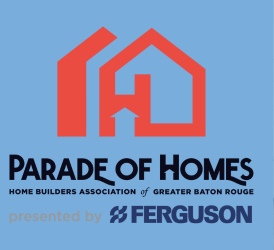
Frustrated? Did you recently replace the floors in your house and find your new wood floors are buckled or “cupped”? Do you have an older home where the wood floors have been installed for years only to recognize the wooden floors began the buckle? What possibly has caused this problem? Is the floor material defective? Was poor construction the cause of the problem? Why are my wood floors buckling?
These are all very logical questions in determining what went wrong. The cause of the problem is often one word – water! What? How can this possibly be the cause since my contractor and the floor installation people checked for moisture before installing the wood floor? Or my wooden floor has been installed for years without any problems? Moisture accumulation in your house can happen many ways under different circumstances.
Let us consider some of these ways. This discussion does not account for all the way’s moisture gets into or accumulates in your house but offers thoughts on some common observations.
Causes of Wood Floors Buckling
In southern climates, moisture comes from the air in your house. The air is treated through your air conditioning system and, in the process, removes moisture from the air during proper operating conditions. However, if your air conditioning system is not working properly, excess moisture may remain in the air as humidity. If this occurs over a long period of time, moisture can be absorbed and retained by porous materials. And wood floors are porous materials. If enough moisture is absorbed in the wood floor, the wood planks begin to swell and expand sideways ultimately pushing on each other causing the joints between the planks to rise – think like a draw bridge rising.
Another common problem in moisture accumulation in your house is the installation of an incorrectly sized air conditioning system. The size of an air conditioning system is dependent on many variables such as the conditioned living area to be served, insulation quality in the walls and ceilings (building envelope), the function of the air conditioning system, and air flow characteristics in your house, to name a few. If oversized or undersized systems are installed, then improper treatment of the air in your house may occur, often creating a high humidity condition. If this happens over a long period of time, moisture can be absorbed and retained in porous materials, like your wood floor. So, if you recently changed your air conditioning system, installed a building addition, or opened walls during a remodel, as examples, consider these changes may have affected the function of the air conditioning system and possibly promoted moisture accumulation in your wood floors. This condition may cause the floor to buckle or “cup”.
If you have an older home with a crawl space and the wood floor begins to buckle or “cup”, the cause may be related to a failed vapor barrier beneath your wood floors. A vapor barrier is the layer below your wood floors that restricts moisture, often by air transport, from your crawl space through your floor. The vapor barrier is often felt paper installed on the subfloor of your raised foundation. In much older homes, deterioration because of “old age” occurs in the vapor barrier allowing warm, moist air to pass through the floor system. When the warm air meets the air conditioned, cold air after passing through the floor, condensation occurs at the wood floor. The wood floor planks absorb the water and cause the wood floor to buckle or “cup”.
These are just a few examples of causes for wood floor buckling and cupping. As you have read, control and proper function of the air conditioning system and the exterior building envelop may play a key role in managing moisture accumulation.
Other conditions to consider include moisture acclamation of the new wood floor prior to installation, changes to temperature of the indoor environment. A diary of all changes to the house, including dates and weather conditions could be useful in solving the problem. Experienced building professionals should be able to assess your house to evaluate the cause of the wood floor buckling.



